Confronting our history and ‘unspeakable acts’ at the site of the Sand Creek massacre
- Share via
Confronting our history and 'unspeakable acts' at the site of the Sand Creek massacre
Reporting from SAND CREEK MASSACRE NATIONAL HISTORIC SITE, Colo.
Craig Moore knows that Sand Creek can be a hard sell, especially to a group of teenagers on spring break.
Groggy from the 2 ½-hour drive from Denver, they pile out of two Chevy Suburbans and stand, almost bored, in the shade of junipers growing beside a picnic table.
About the series:
The 412 units of the National Park Service are as varied as the United States itself and an incredible legacy for Americans. The Los Angeles Times Travel section continues a yearlong look at some of those units, why they matter and how the park service is working to tell this country’s story. More in the series »
“This is no Disneyland, no Grand Canyon,” Moore says by way of introduction. “This is a sacred place where horrible things, unspeakable acts took place.”
Moore talks slowly as if he hasn’t said this before, but he has. Words just don’t come easily when talking about the enormity of Sand Creek.
“One hundred and fifty two years ago, what happened here left an indelible mark on the land.”
Twitchy adolescence in check, the teens start to pay attention. Moore, who recently retired from the National Park Service, started working as a ranger at Sand Creek in 2004. There are few better guides.
The park service manages 412 properties, each a chapter of America’s storied past. Some make grand pronouncements on the merits of their landscape. Others commemorate lives and moments that have shaped the national identity.
One hundred and fifty two years ago, what happened here left an indelible mark on the land.
— Craig Moore
None, however, tells a story as dark as Sand Creek, where, in 1864, federal soldiers stormed a peaceful camp of Cheyenne and Arapaho, killing more than 200.
Moore leads the group on a half-mile walk to an overlook with commanding views north to a distant stand of cottonwoods.
“Spread out before you,” he says, “as far as you can see, is where the massacre took place, nearly 30 square miles.”
The students squint in the bright sun as if trying to look back in time and see the soldiers and horses fanning across these plains, hear the rattle of equipment, the crack of carbine fire and the screams that followed.
“There is no sound worse than the sound of babies crying,” Moore says.
Almost 180 miles southeast of Denver, Sand Creek is an unusual property for the park service. Its visitor’s center is a double-wide trailer that also serves as office space. Its primary feature is a one-mile trail on a bluff that overlooks the killing field where no one is allowed.
Sand Creek is mostly a place of the imagination, where visitors are asked to consider a time in America before sea-to-shining sea, a time when mean circumstances or greed drove people to the gold fields and cities of the West and to a hatred of anything different from themselves.
The picture may not be easy to conjure, but the park service can help. When a car pulls into the dirt lot, a chime in the trailer plays “Für Elise,” and a ranger steps outside to greet each arrival with as much or as little information as the visitors might need to understand the site.
Nearly a dozen interpretive signs along the bluff trail lay out the history. Beyond that, though, there is little more than the land stretching to the far-away horizon, a stark canvas that seems to compete with the sky for emptiness.
But in emptiness, Sand Creek is most eloquent. Some visitors claim to hear children’s voices in the wind-whistling quiet.
The worst mass shooting? A look back at massacres in U.S. history »
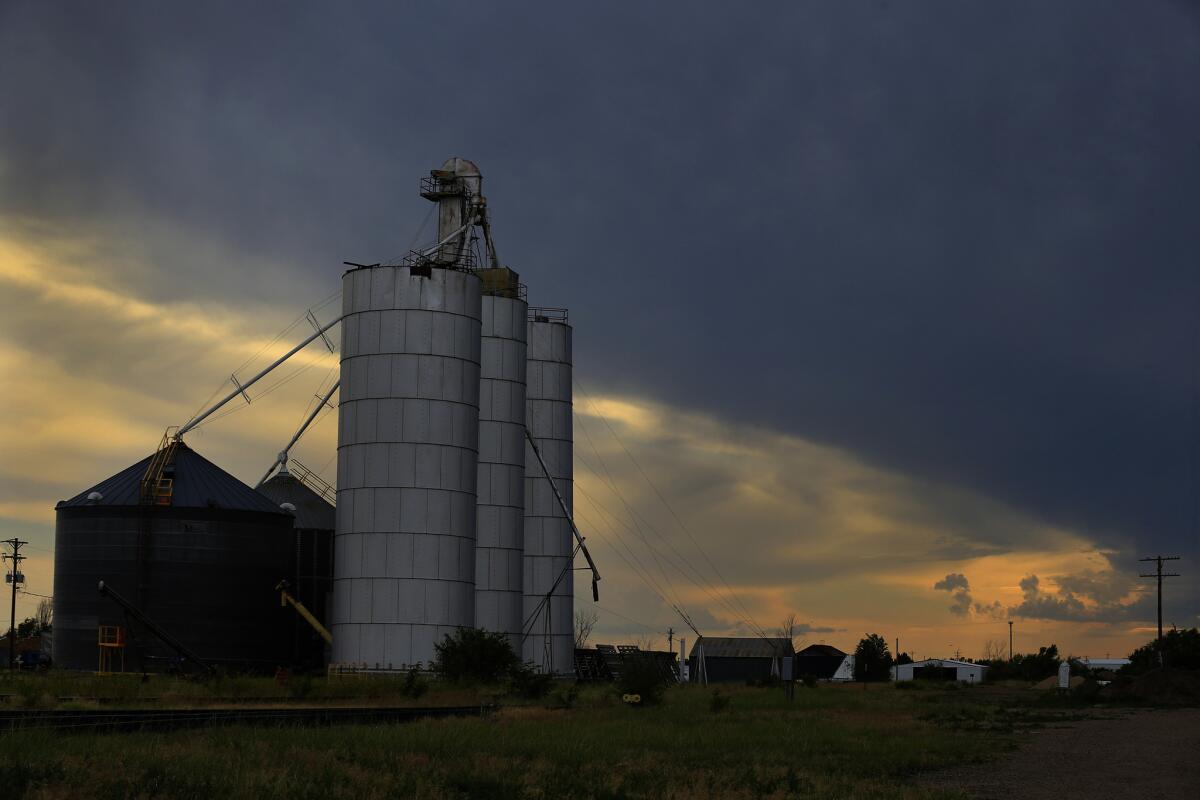
A cold case
Eads, Colo., could be called the gateway to Sand Creek, which wouldn’t be too bad. The small town, population 650, nearly blew away during the recession, and the recovery still seems to be lagging. But appearances are deceiving.
A senior-living community recently opened on the edge of the prairie, and on the road to Sand Creek, the Cobblestone Inn is giving the weary-looking Travelors Lodge a run for its money (to say nothing about its spelling).
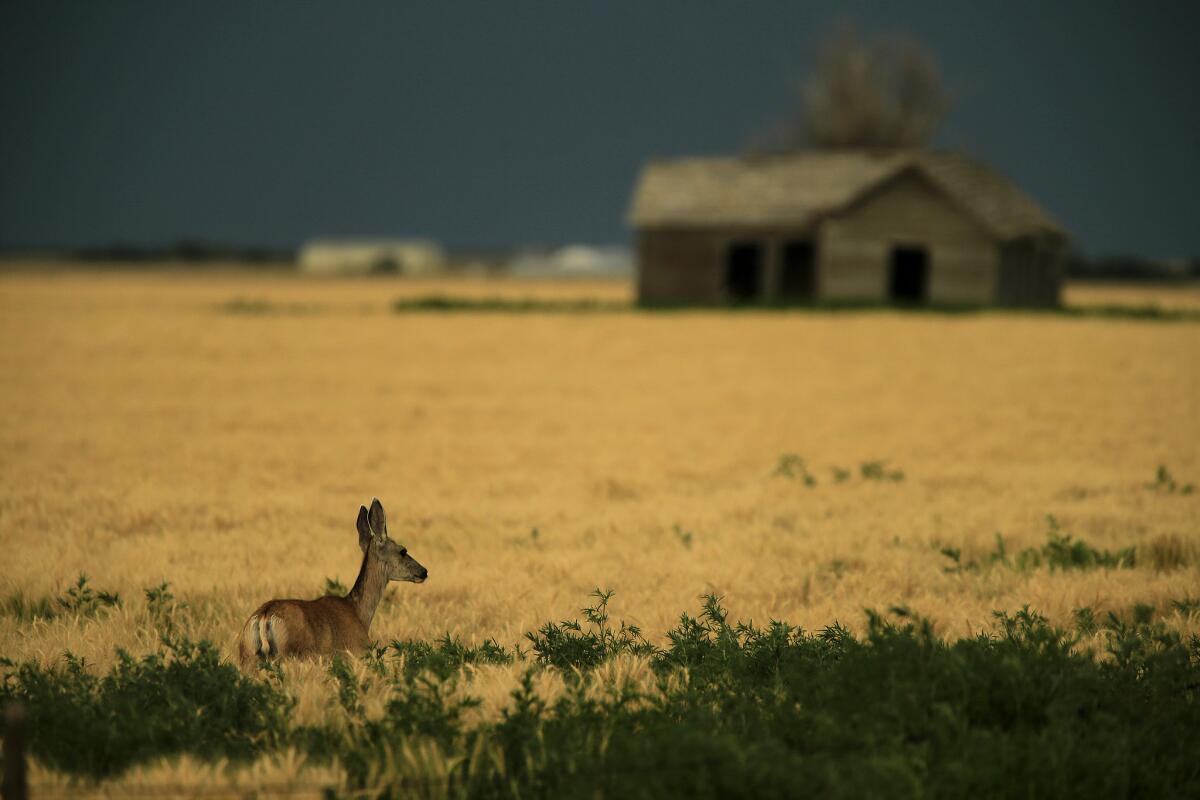
Jeff Campbell, sporting a white cowboy hat, stands in the inn’s parking lot beside a white pickup. The wind has kicked up this morning, and he’s more than happy to step inside.
He carries two rolled-up maps of Sand Creek and lays them out on a breakfast table. Measuring 2 by 4 feet, they are meticulously annotated with the movement of soldiers and Cheyenne and Arapaho across these grasslands in the fall of 1864.
Campbell, retired from the New Mexico attorney general’s office, sees Sand Creek as a cold case, an unindicted homicide, perhaps the most complicated he has known.
“It is hard to tell this kind of story,” he says. “It is like recording what took place at Dachau or Auschwitz or Darfur or Rwanda.”
The facts are well documented. At 8 p.m. Nov. 28, nearly 700 soldiers rode out of Ft. Lyon on the Arkansas River. Guided by the pole star, they headed north under the command of Col. John Chivington.
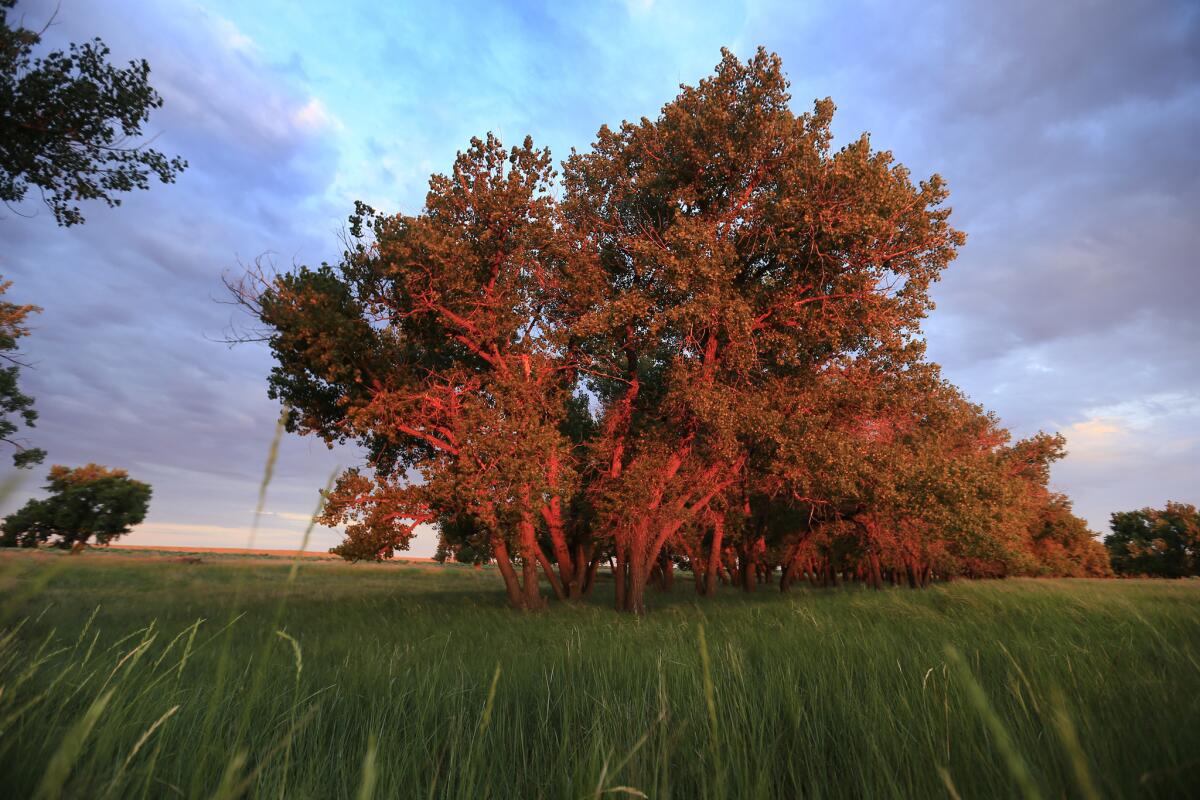
“They were not militia, part-time soldiers,” Campbell says. “They were U.S. Army volunteers employed by the War Department. President Lincoln was their commander.
“All this,” Campbell says, “goes to the matter of culpability.”
The night was clear and starlit. Forty miles away was a temporary camp of about 750 Cheyenne and Arapaho on the north bank of the Big Sandy Creek and within a reserve that had been established for them by a treaty four years earlier.
“Some of the soldiers didn’t know the purpose of their ride,” Campbell says. “Some thought they were going to talk to the people at Sand Creek before engaging with hostiles farther east.”
The soldiers rode fast. They wanted to get to the camp by dawn. By midnight, they reached a few small lakes on the prairie, almost halfway.
An hour later, they shifted their course 45 degrees to the northeast. By 6 a.m. they were nearly three miles out and exhausted.
The sky was lightening. The women had risen and were collecting firewood and water. They thought they heard buffalo running nearby, hoofs heavy on the plain.
But three young men — King Fisher, Tomahawk and Little Bear, who were rounding up the pony herds to the west and had a clearer vantage — knew differently.
“They were the first to realize that the cavalry was coming,” Campbell says.
'Sand Creek is the story of individuals,' soldiers, warriors, victims, heroes and criminals »
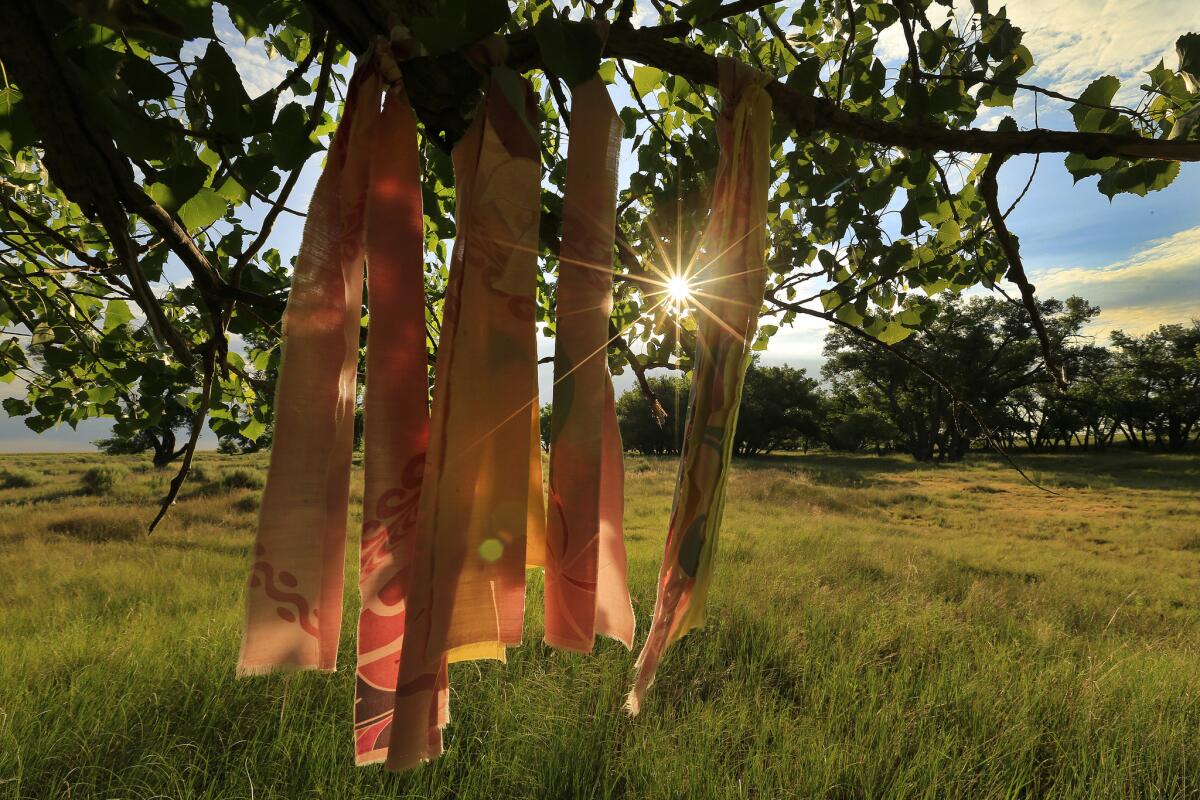
No prisoners taken
A phone rings in Fort Washakie, Wyo., and Norma Gourneau answers. She is willing to talk about her family’s experience at Sand Creek.
“Yes,” she says. “I don’t mind.”
Gourneau is Northern Cheyenne and superintendent of the Wind River Agency of the Bureau of Indian Affairs. As a little girl, she listened to her great-grandmother, May Woman, born in 1880, share memories of that day at Heseovo'eo'he'e, as Sand Creek was known. Her older brothers and sisters survived the massacre.
“We all lived under the same roof,” Gourneau says. “There was my great grandmother, my grandmother and my mother. We heard a lot of stories and didn’t realize how significant they would be until later in life.”
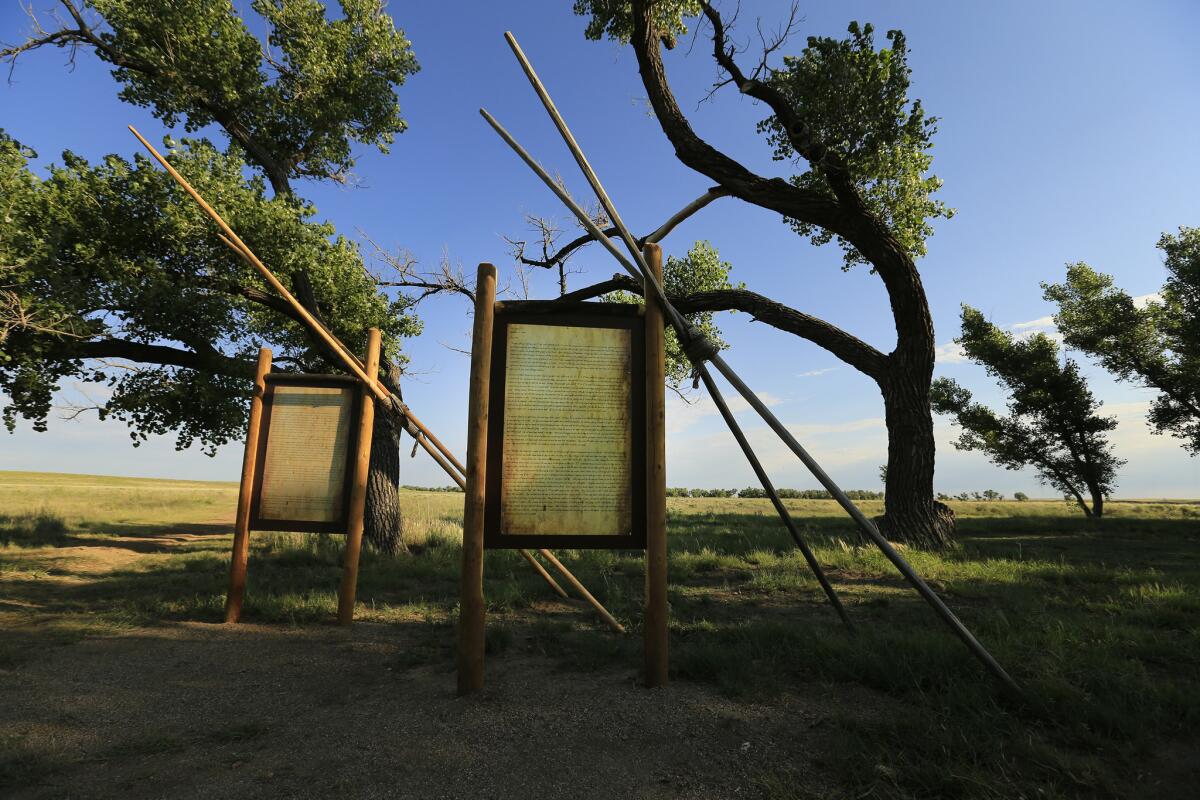
Gourneau remembers the tears and how they scared her. She could not understand how someone so strong could cry over something that occurred so long ago.
When Chivington’s soldiers arrived at the bluffs overlooking the Big Sandy the morning of Nov. 29, they saw about 140 lodges staked out for nearly a half a mile. Any questions the soldiers had about the purpose of their mission were quickly answered.
Under Chivington’s orders, troops began firing into the camp. Black Kettle, one of the Cheyenne chiefs, stepped out from his lodge where an American flag and a white flag flew.
Although renegade factions had attacked white settlers in previous months, the tribes at Sand Creek wanted peace. Their chiefs saw the futility of fighting. They walked toward the mounted soldiers, hoping to understand what was happening, but they were quickly overwhelmed.
All but Black Kettle were killed.
Women and children were fleeing up the creek, trying to hide, trying to escape. They crawled into tree trunks; they hid beneath the sand of the river bank. The soldiers followed.
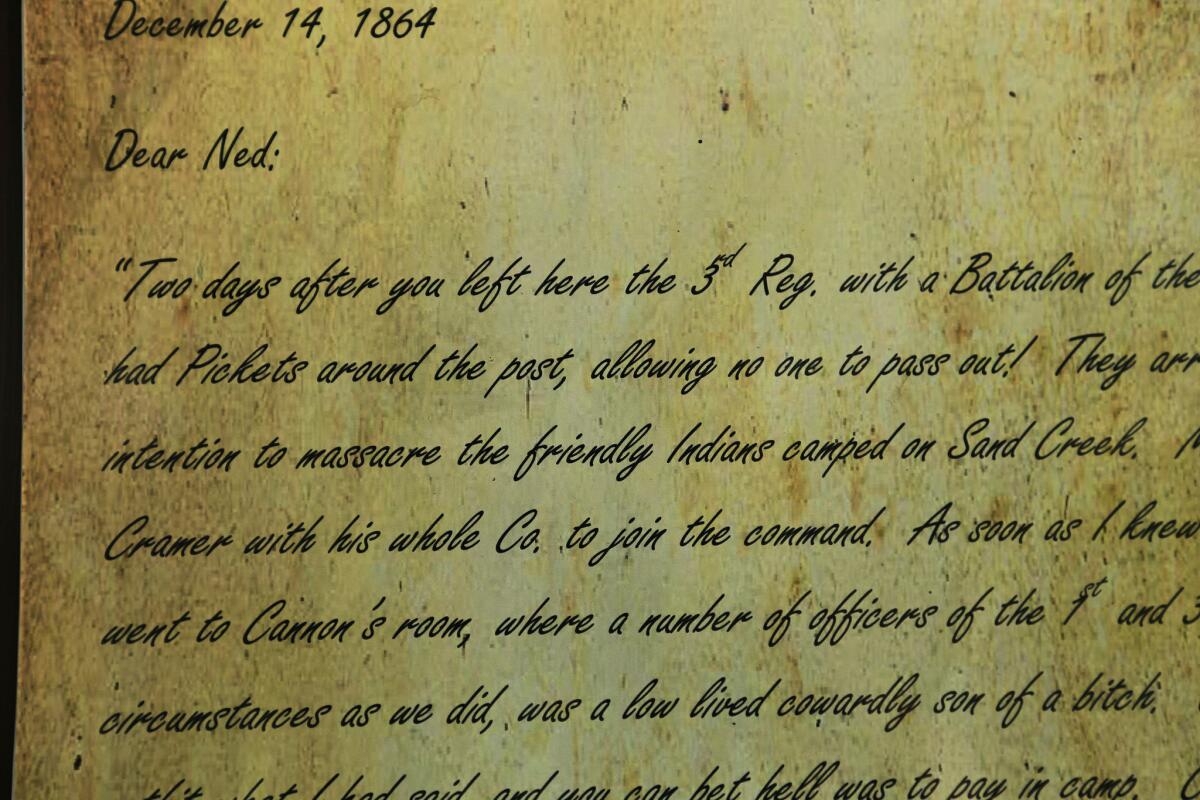
Cheyenne and Arapaho warriors tried to stand against them but bullets, coming from carbines and four mountain howitzers, struck the lodges “like a hard rain or a heavy storm,” according to one survivor.
The massacre lasted eight hours. No prisoners were taken. Trophies — body parts, jewelry — were cut from corpses, and two days later the village was burned.
In the end an estimated 230 Indians were killed, says Moore; no one knows how many died later of their wounds. When the soldiers dug for water, the sand ran red with blood.
Why Chivington attacked is not a simple question. Propagandists at the time claimed the tribes might align themselves with the Confederacy. Racists demonized the Native Americans and their culture.
Campbell looks to the outcome for his answer. Within six years, the Kansas Pacific Railroad had laid tracks, just north of Sand Creek, to Denver. The Cheyenne and Arapaho had abandoned their land in Colorado Territory.
Today the tribes live in Oklahoma, Wyoming and Montana.
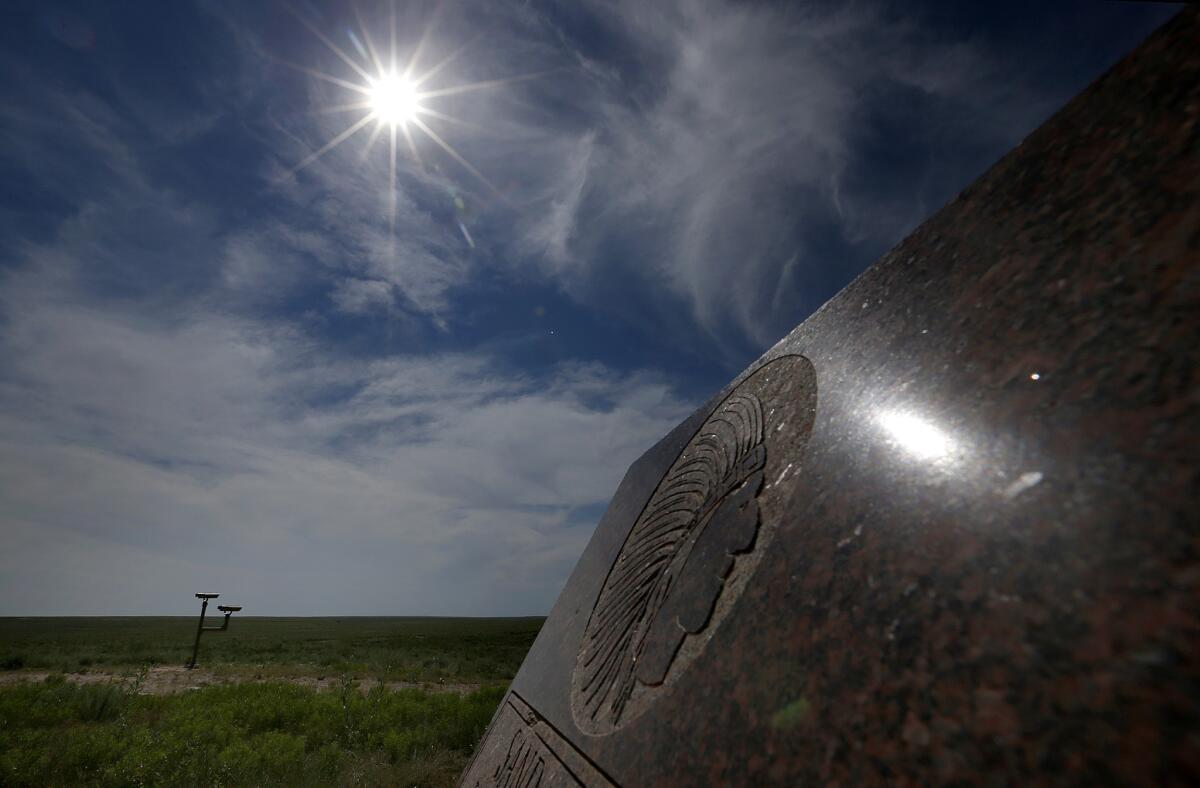
May Woman died when Gorneau was 6, and the tears didn’t stop. Only the fear changed to anger, anger over the butchery, over the parading of trophies through the streets of Denver, over the betrayal of trust.
Rather than deny these feelings, Gourneau confronted them. She visited Sand Creek in 1996 for the first time and stood on the bluffs where a knee-high memorial had been placed in 1950.
“Sand Creek Battle Ground,” it read, using a century-old description of the site that was both inaccurate and exculpating. The truth — Sand Creek as a massacre — had to be spoken.
In 1998 Gorneau joined representatives from other Cheyenne and Arapaho tribes to petition Congress for funding to locate the site, lost after a century of ranching, dust storms and seasonal floods.
Working with historians and archaeologists, the tribes eventually identified an area five miles long and two miles wide, which was later enlarged by Congress to 12,500 acres. The National Park Service manages a quarter of that property.
'So it won't happen again': How the descendants remember the Sand Creek massacre »
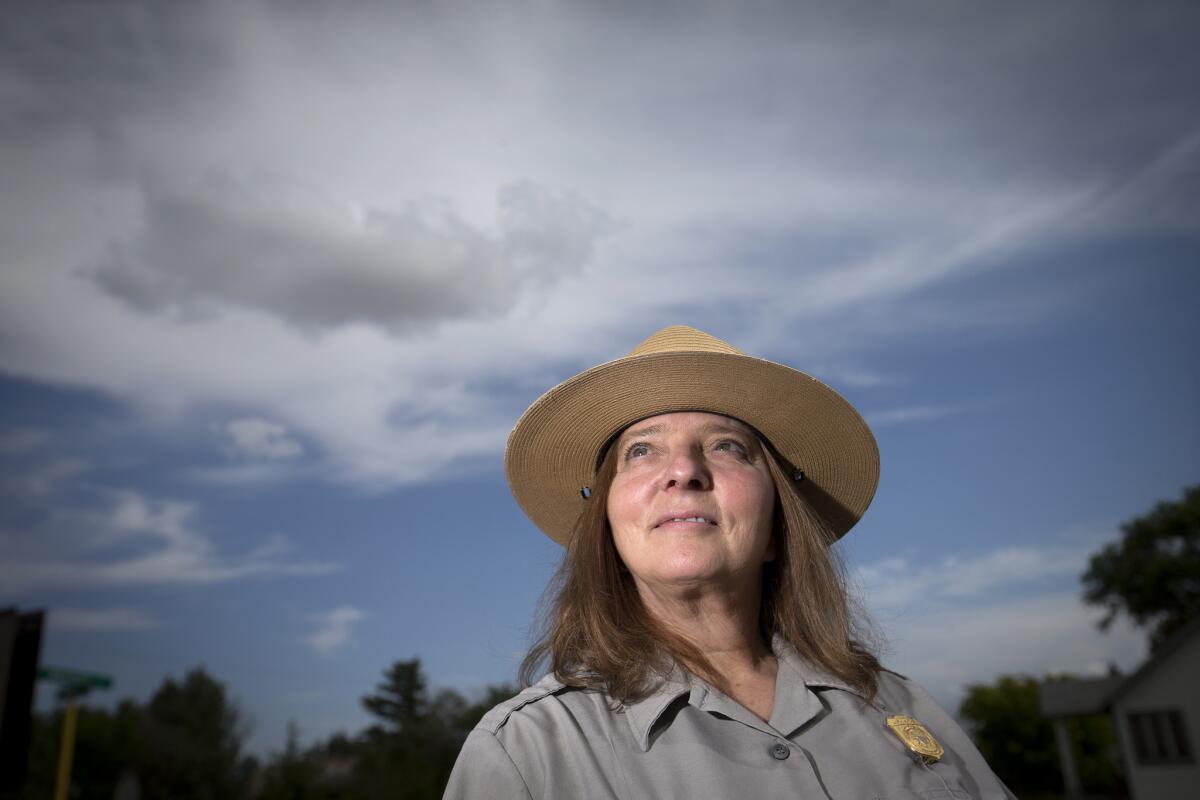
An impossible mandate
In 2000 Congress ordered the secretary of the Interior to not only protect and preserve the site but also to “assist in minimizing the chances of similar incidents in the future.” The mandate is intimidating.
“I don’t know how we can do that,” says Sand Creek superintendent Alexa Roberts, who over the years has appreciated how the conversation about the massacre has shifted from controversy to acknowledgment.
“At first,” she says, “we spent our time wondering how to talk about it. Now we’re talking about it.”
In 2008 the United Methodist Church agreed to donate $50,000 to Sand Creek for the role that territorial governor John Evans and Chivington, both members of the church, played in the massacre. In 2012 it conducted an “Act of Repentance.”
In 2014 the Colorado legislature added a plaque to the 1909 Civil War monument in Denver to acknowledge Chivington’s attack on the “peaceful camp of Cheyenne and Arapaho” and the need for Coloradans “to understand and take responsibility for our past.”
That year Northwestern University released a report condemning Evans, who had been a founder, donor and trustee, for “complete indifference to the suffering inflicted on Cheyenne and Arapaho” and “deep moral failure” in the aftermath of the massacre.
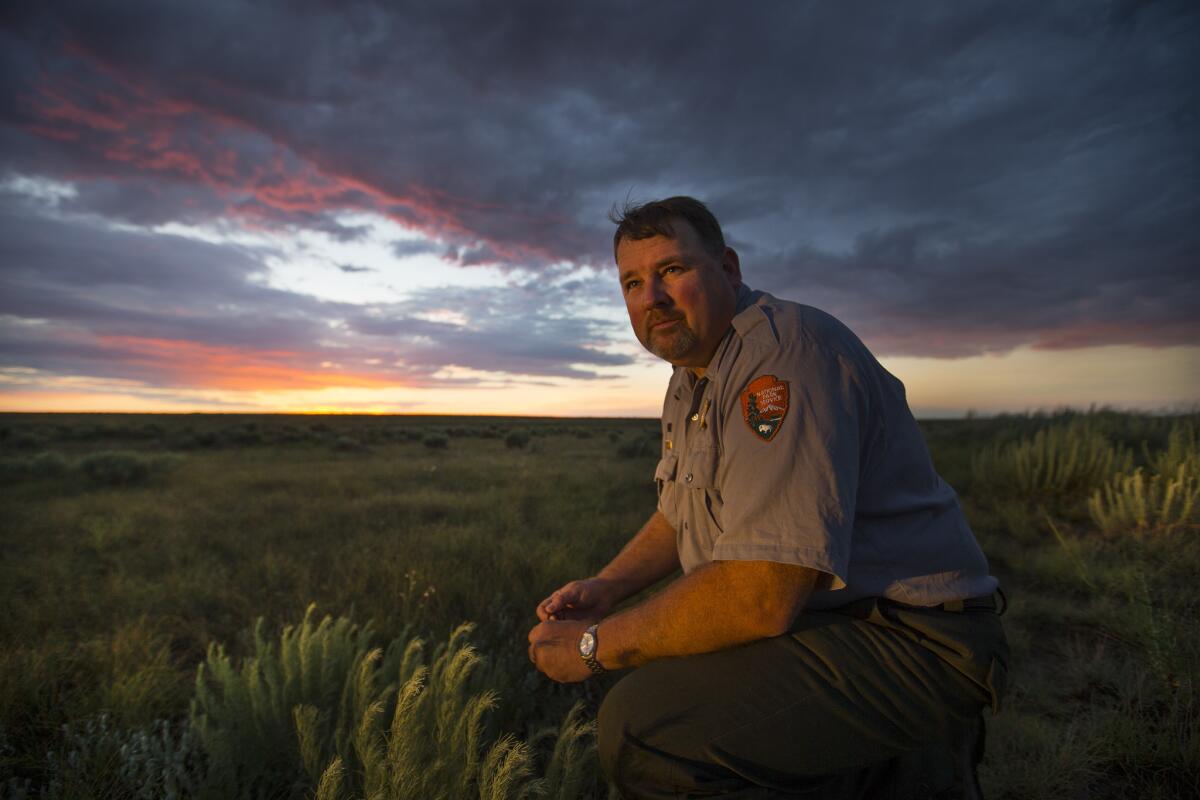
In 2015 the park service developed a management plan that calls for a new ranger station, improved roads, more signage, seating and wheelchair accessibility along the bluff trail.
The long-term goal, developed in consultation with the Cheyenne and Arapaho tribes, is to open a research and study center in Eads.
Roberts, who works with an annual budget of $900,000, hopes the entire project, priced at $4 million, gets funded. The irony is not lost on her: that the federal government, perpetrator of this tragedy, is being asked to preserve this tragedy. The lessons are too urgent and too relevant.
“Whenever you have hate speech or acts of violence based on race, religion or any difference, you have the elements of Sand Creek,” she says. “Whenever you accept stereotyping — us versus them — you will be able to justify the results of Sand Creek. It is ever-present. It is around us every day, in every era.”
Tips for visitors
How to get to Sand Creek
From LAX, American, United, Delta, Frontier and Southwest offer nonstop service to Denver, and Southwest, United, Delta, Virgin America and American offer connecting service (change of planes). Restricted round-trip airfare from $218, including taxes and fees. Denver International Airport is 166 miles from Sand Creek Massacre National Historic Site. From Denver, take Interstate 70 east to Limon; from Limon, take Highway 287 south to Eads. Sand Creek is 24 miles east of Eads, on Colorado 96 to Chief White Antelope Way (County Road 54).
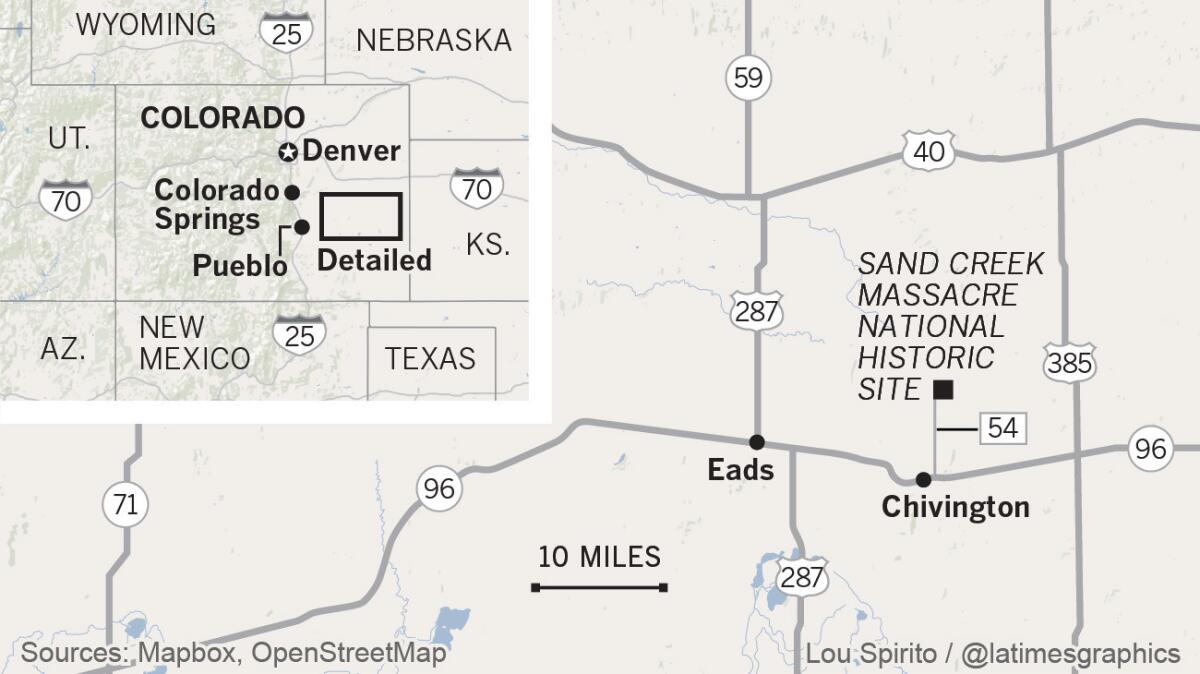
Best time to visit
The park is open 9 a.m. to 4 p.m. year round except for major holidays. Open daily April 1-Nov. 30; open Mondays-Fridays Dec. 1– March 31. Rangers conduct 15-minute talks at 10 a.m. and 2 p.m.
Spring and fall are the best seasons to visit; summer temperatures can top 100 and winter temperatures can drop to 30 degrees. The wind is a constant at Sand Creek, so visitors should expect sand and dust. More information, visit the park’s website.
Besides the on-site visitor’s center that sells maps, books and guides, the National Park Service has an office at 901 Wansted St., Eads ([719] 438-5916 or [719] 729-3003).
Sleep
Cobblestone Inn & Suites, 501 East Lowell Ave., Eads; (719) 438-2021. Clean and comfortable, complimentary breakfast, plus beer and wine bar, office center and fitness room. Doubles from $110.
Eat
JJ’s Restaurant, 505 E.15th St., Eads; (719) 438-2002. A short-order diner with daily specials (corned beef and butter noodles), burgers, sandwiches and pie. Open 6:30 a.m. to 8:30 p.m. Closed Sundays.
Windmill Saloon, 40549 E. 15th St., Eads; (719) 438-2226. Drinks and bar food (burritos, burgers, rib sandwiches) from 5 p.m. to 2 a.m. Closed Sundays.
Cinnamon Joe, 911 Wansted St., Eads; (719) 438-5633. Good coffee, sandwiches and lunch fare. Open 10 a.m. to 3 p.m Mondays-Wednesdays, 10 a.m. to 8 p.m. Thursdays and Fridays. Closed Mondays in winter
To do
The Crow-Luther Cultural Events Center was established in 2006 to bring special programs to downtown Eads. The center has preserved the Plains Theater, which features a summertime schedule of weekend movies, special lectures and book club discussions. The Maine Scoop ice cream parlor is in the theater. On Sept. 10, Eads will host the Kiowa County Fair and Rodeo Street Dance.
More info
Three books are indispensable for explaining the significance of Sand Creek. For details about the massacre, “The Sand Creek Massacre,” by Stan Hoig (University of Oklahoma Press). For details about the establishment of the national site, “A Misplaced Massacre: Struggling Over the Memory of Sand Creek,” by Ari Kelman (Harvard University Press). For an interpretation of why the massacre occurred, “Massacre at Sand Creek: How Methodists Were Involved in an American Tragedy,” by Gary Roberts (Abingdon Press).
Memorials to a tragic past: National Park Service sites that consider the dark side of our history »
Twitter: @tcurwen
Follow our adventures: Facebook | Twitter | Pinterest
Additional Credits: Digital design and production: Sean Greene.
Sign up for The Wild
We’ll help you find the best places to hike, bike and run, as well as the perfect silent spots for meditation and yoga.
You may occasionally receive promotional content from the Los Angeles Times.




